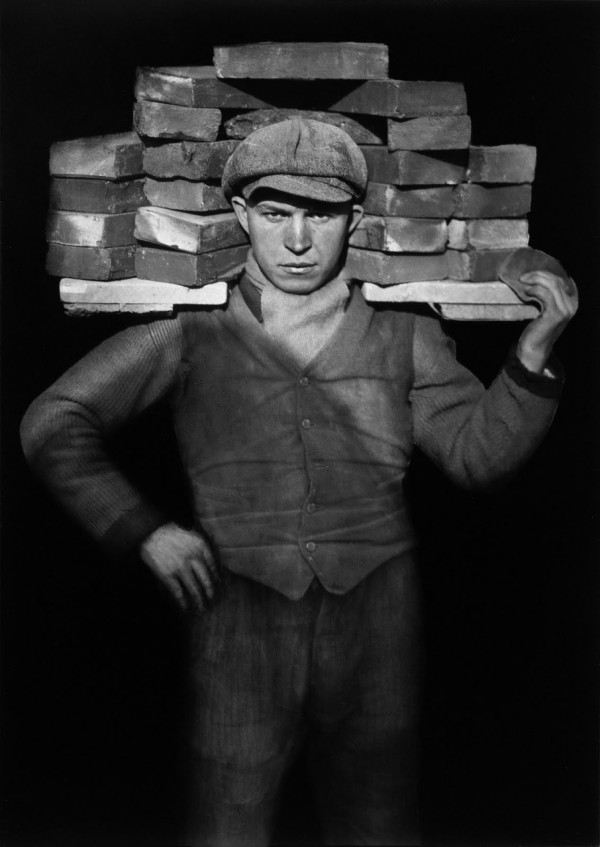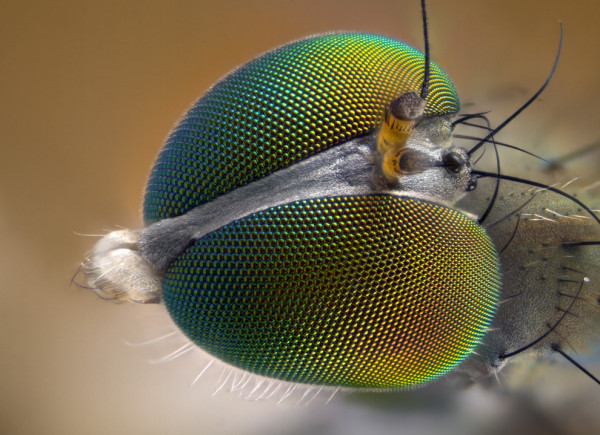August Sander, Bricklayer’s Mate (Germany, 1928). (via)
Art
Dub FX: Soothe Your Pain
Darwinian Theories of Beauty
In this TED video, Denis Dutton explains how our shared sense of what is beautiful may have its origin in human evolution. The theory connects to another idea I ran across recently: that we humans acquired our species-wide instinct for storytelling as a biological adaptation. Telling one another stories conferred on our ancient ancestors an advantage, i.e. storytelling animals were more likely to survive than non-storytelling ones. Brian Boyd seems to be the leading exponent of this theory with his book, On the Origin of Stories. (Boyd summarizes the theory here. An interesting review of the book by Michael Bérubé is here.) If all this is true — if we are hardwired to find certain art forms beautiful and to enjoy certain kinds of stories — then maybe we should not worry so much about the death of the novel after all.
Shoes
This video made the rounds on the web a while ago, when Converse announced the latest reinterpretation of its sneakers by designer Ryusaku Hiruma, but I only discovered it the other day.
Fashion clod that I am, I had never heard of Hiruma or his Converse shoes. For the uninitiated: Ryusaku “Sak” Hiruma is a Japanese designer who has been studying traditional shoemaking techniques in Florence for almost a decade. Over the last few years, Sak has applied old-world craft to produce chic, luxurious handmade versions of Converse’s classic Jack Purcell, Chuck Taylor, and One Star models. The latest Sak/Converse shoe, a design based on an old basketball shoe called the Star Tech, features fine leather and hand-stitching throughout. Only 64 pairs will be made, in natural shades of tan, off-white and black leather. Retailing for $600, they will be available only in New York, Boston, and Costa Mesa. (Costa Mesa?) If you’re into shoe porn, details are here and here.
I loved this video. I found it oddly touching and romantic, not just for Sak’s dedication to craft and tradition but for personal reasons. My own family was in the shoe business for several generations. Growing up, I assumed I would be too. There were no writers or artists of any kind in my family or anywhere else in my world. Even now I think I might have been very happy making shoes.
Maybe that is why I have a nagging sense that, as a writer, I don’t really “make” anything. A book is an ethereal creation, a non-object. It exists as a chain of words, separate and apart from the paper-and-ink thing we call by that name. Book publishing is only now transitioning to digital, permanently alienating the idea of a “book” from a physical object, but writing made the leap decades ago. In my own daily working life, paper plays no part. Over the two years or so it takes me to produce a novel, I never print out a hard-copy manuscript. And when I am done, I simply email a digital file to my editor. There is no object to hold, really, until I receive bound copies from the publisher, long after the writing is done. Even then, the physical books do not feel like my creation. Only the words do.
Contrast that with the intensely physical world of traditional shoemaking in this video. The materials are so lush and sensuous. Even the tools have a gorgeous patina. That the shoemaker’s artistry is lavished on such a low, practical object — when you step in shit, it is not your hat that is ruined — only makes the concrete physicality of the whole thing that much more real and authentic. Only 64 pairs of these shoes will be made, and Hiruma will touch every one with his own hands. And, poignantly, every one one of those shoes will wear out.
Novels, of course, are theoretically immortal precisely because they are insubstantial. My books can be reprinted and rescreened into infinity, and each copy is no less my creation than any other. Maybe that is what makes the shoemaker’s art so poignant to a writer: he cannot give you his creation without surrendering it himself.
Kanye West: Power
A kiss in the dark
A short story is like a kiss in the dark from a stranger.
Stephen King
Fly
Magnified 10 times, a view of Dolichopodid sp. (fly) eyes made by Laurie Knight of Tonbridge, Kent, UK.
“The Nikon International Small World Photomicrography Competition recently announced its list of winners for 2010. The competition began in 1974 as a means to recognize and applaud the efforts of those involved with photography through the light microscope.” (via)
“Best Society” by Philip Larkin
When I was a child, I thought,
Casually, that solitude
Never needed to be sought.
Something everybody had,
Like nakedness, it lay at hand,
Not specially right or specially wrong,
A plentiful and obvious thing
Not at all hard to understand.
Then, after twenty, it became
At once more difficult to get
And more desired — though all the same
More undesirable; for what
You are alone has, to achieve
The rank of fact, to be expressed
In terms of others, or it’s just
A compensating make-believe.
Much better stay in company!
To love you must have someone else,
Giving requires a legatee,
Good neighbours need whole parishfuls
Of folk to do it on — in short,
Our virtues are all social; if,
Deprived of solitude, you chafe,
It’s clear you’re not the virtuous sort.
Viciously, then, I lock my door.
The gas-fire breathes. The wind outside
Ushers in evening rain. Once more
Uncontradicting solitude
Supports me on its giant palm;
And like a sea-anemone
Or simple snail, there cautiously
Unfolds, emerges, what I am.
(1951)

